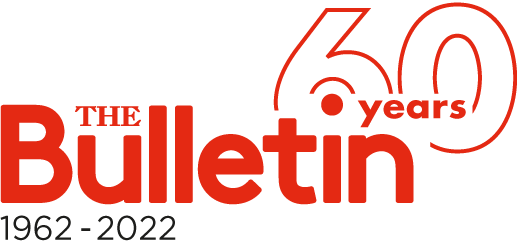- Daily & Weekly newsletters
- Buy & download The Bulletin
- Comment on our articles
Kanal-Centre Pompidou prepares to open in November 2026
The long-awaited Kanal-Centre Pompidou, housed in the former Art Deco Citroën garage that has dominated Place Sainctelette since 1934, will open its doors on 28 November 2026, museum director Yves Goldstein has confirmed.
With exhibition spaces totalling 40,000m², Kanal is expected to be one of the largest museums in Europe. The future mecca of contemporary and modern art will not only include exhibition spaces, but it will also enjoy large open areas freely accessible to visitors.
In short, the one-time gigantic garage dubbed “the cathedral of the car” will now be home to a public library, "artistic" playground and bakery, as well as to a three-storey permanent exhibition.
Kanal is envisioned as “an extension of the city”, its spokesperson Dieter Vanthournout said. “The museum’s four entrances will always be open for visitors wishing to study, read, or simply have a drink. They can then choose to purchase a ticket for an exhibition or dance performance, and club nights will also be held.”
Goldstein is confident that the museum will add value to the capital.
“We don’t want Kanal to be a traditional museum,” he said. “We aspire to create a museum where a majority of the space – more than half of the total area – is publicly accessible. It should be a ‘city within a city’ and will contain a bookstore, museum shop, library, reading room with study places
“The real, long-term work will be our public outreach,” the museum head added. “We are aiming for an audience of local residents who would not walk into a museum like Kanal on their own,” with the entire opening hall open free of charge from 7.00 to midnight.
Vanthournout added: “We aim to retain as much of the original Citroën garage design as possible, although some modifications have been necessary for practical reasons, such as ensuring the conditions needed to display Picasso paintings and to address climate control.”
Kanal’s artistic director, the art historian Kasia Redzisz, said that, in line with the Centre Pompidou collections in Paris, “our permanent exhibition will be a thematic overview of modern art history from the twentieth century. At the same time, there will be at least seven temporary exhibitions in the gallery spaces.”
Out of the 300 permanent works, the vast majority have already been purchased or loaned, she said. They include a few Picassos, sculptures by Alberto Giacometti and at least one Piet Mondrian.
As well as the mega-entrance hall and facilities, Kanal will boast four catering establishments, from a local bakery and brasserie to a more expensive restaurant and rooftop bar.
In addition, two auditoriums and six multifunctional rooms can be rented free of charge for workshops or meetings. A final gallery will be taken over by architecture museum CIVA, currently based in Ixelles.
All this comes naturally at a cost, with Kanal’s total budget estimated at €230 million. How to keep up finance for the museum site is likely to prove problematic, particularly as Brussels still has no government.
For now, all renovation costs and financing some 80 employees are paid for with regional government money. The construction work alone is priced at €192 million. The outgoing Brussels government has already approved €185 million and paid some €175 million.
Operating costs, estimated at €35 million per year, are more controversial, and the subject of many questions in the Brussels parliament and the press. But Goldstein said that stopping Kanal would be a disaster for Brussels, particularly as 95% of the investment budget has already been released.
Meanwhile, the Kanal team has saved some money by adjusting its initial plans. There will no longer be the planned news ticker around the facade, an arresting feature of Pompidou Paris. It has also managed to cut the operating subsidy for 2025 to €24.3 million, as the site will remain closed and so not require security staff or heating.
When opened, Kanal expects to achieve an annual turnover of €15 million, through ticket sales, private rentals, the museum shop and from catering and sponsorship.
Goldstein insists that exhibition ticket prices must remain lower than those of Bozar. Children and local residents will have free entry, and at least one brasserie must “remain affordable for residents of the Canal Zone”, he said.
Added to the planned subsidies, Kanal will then run on €50 million in income per year: €13 million for maintenance costs, €23 million for personnel and services, and €11 million for operating costs such as programming and production.
The chief executive said that any profit will be for the Kanal foundation. And he added: “For every job in the museum, more than 2.8 new jobs are made outside of it.”
In total, after the grand opening next November next year, Kanal expects to create 300 direct on-site jobs, including many posts for low-skilled residents from the Canal Zone.
In addition, Goldstein estimates that more than 1,000 indirect jobs in the city will stem from the project – from hotels to taxi drivers and catering.


















